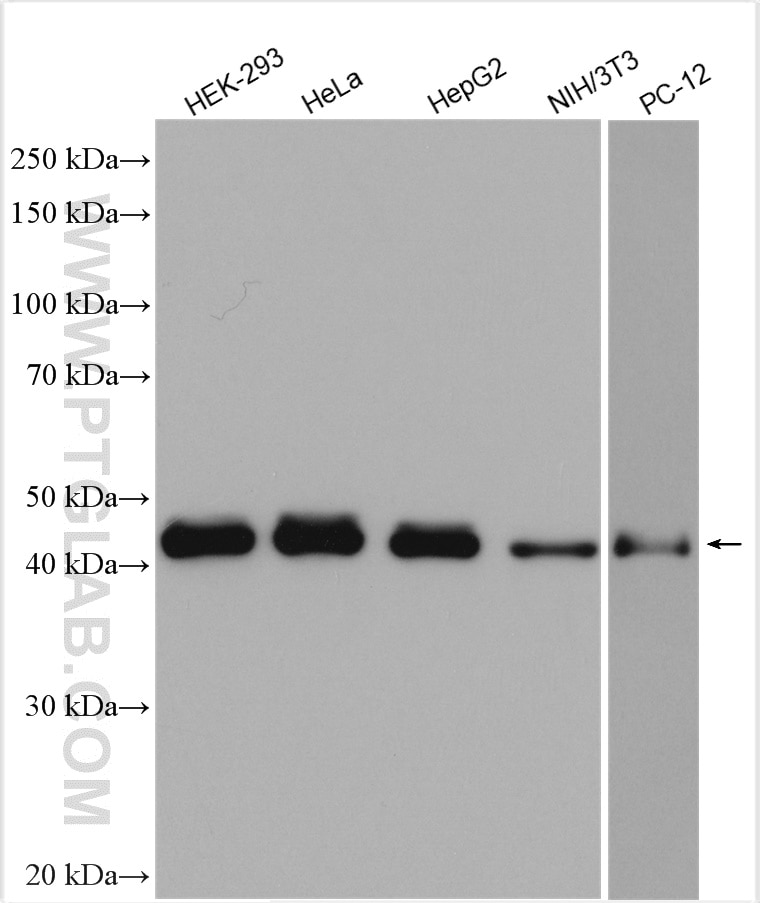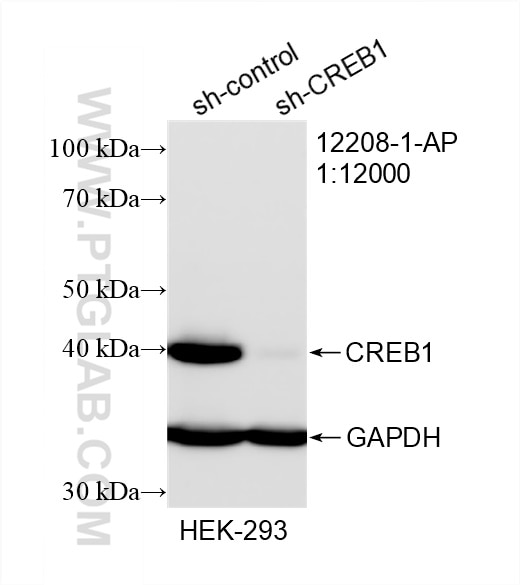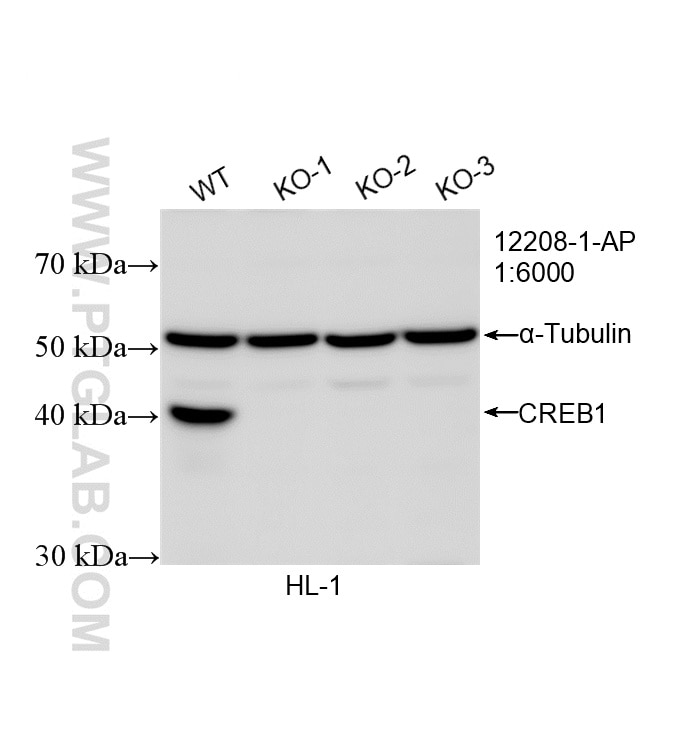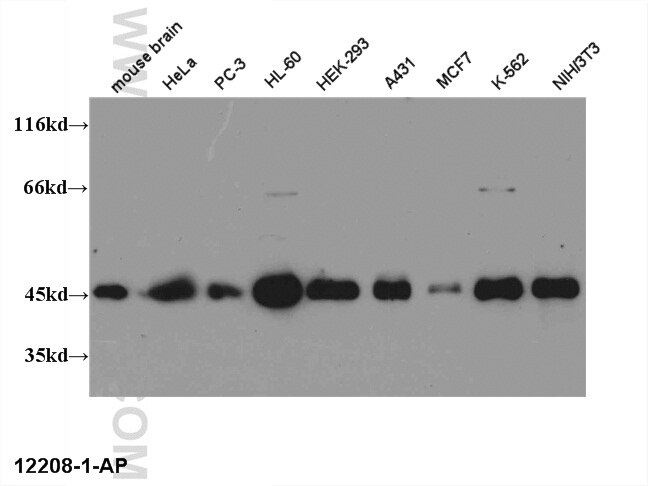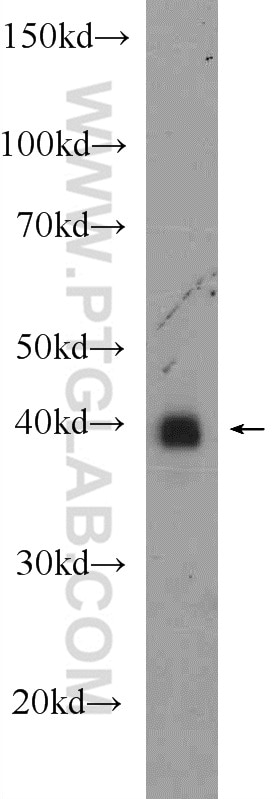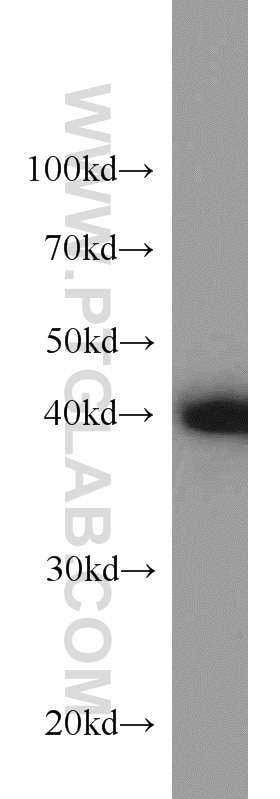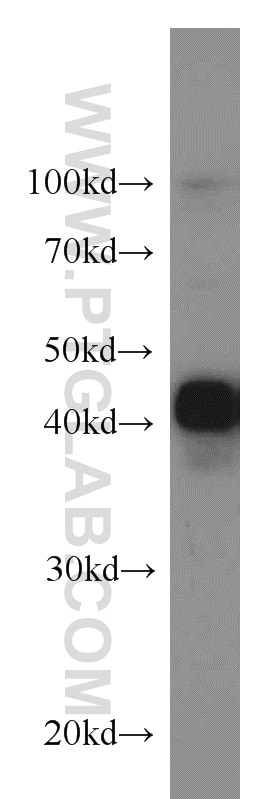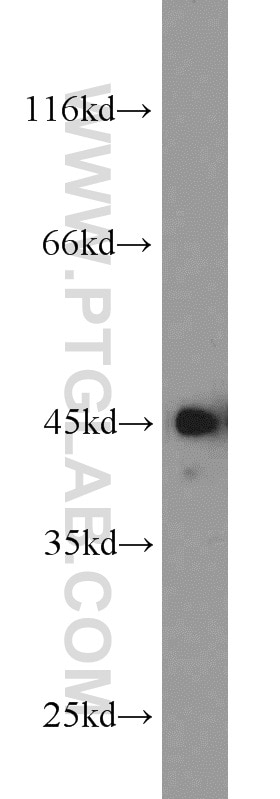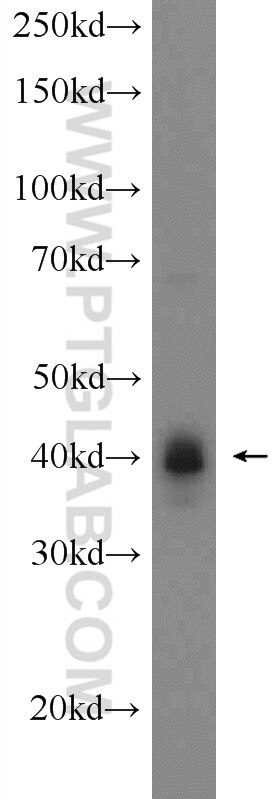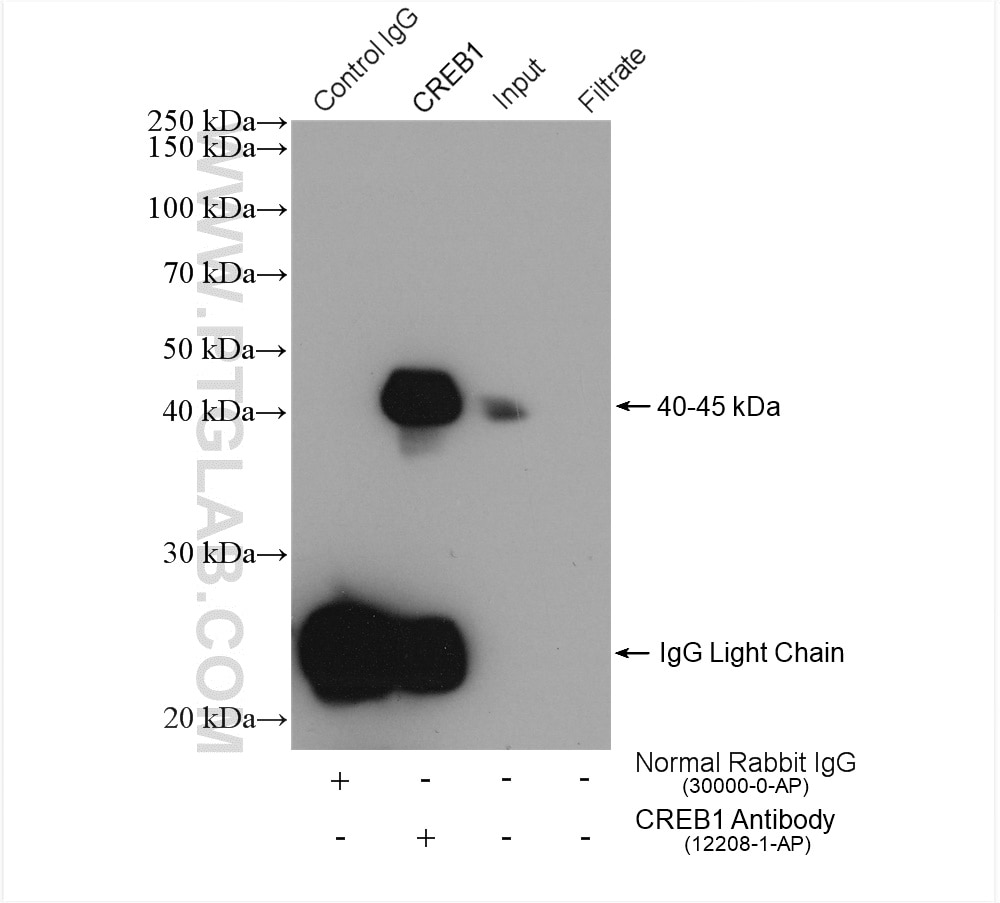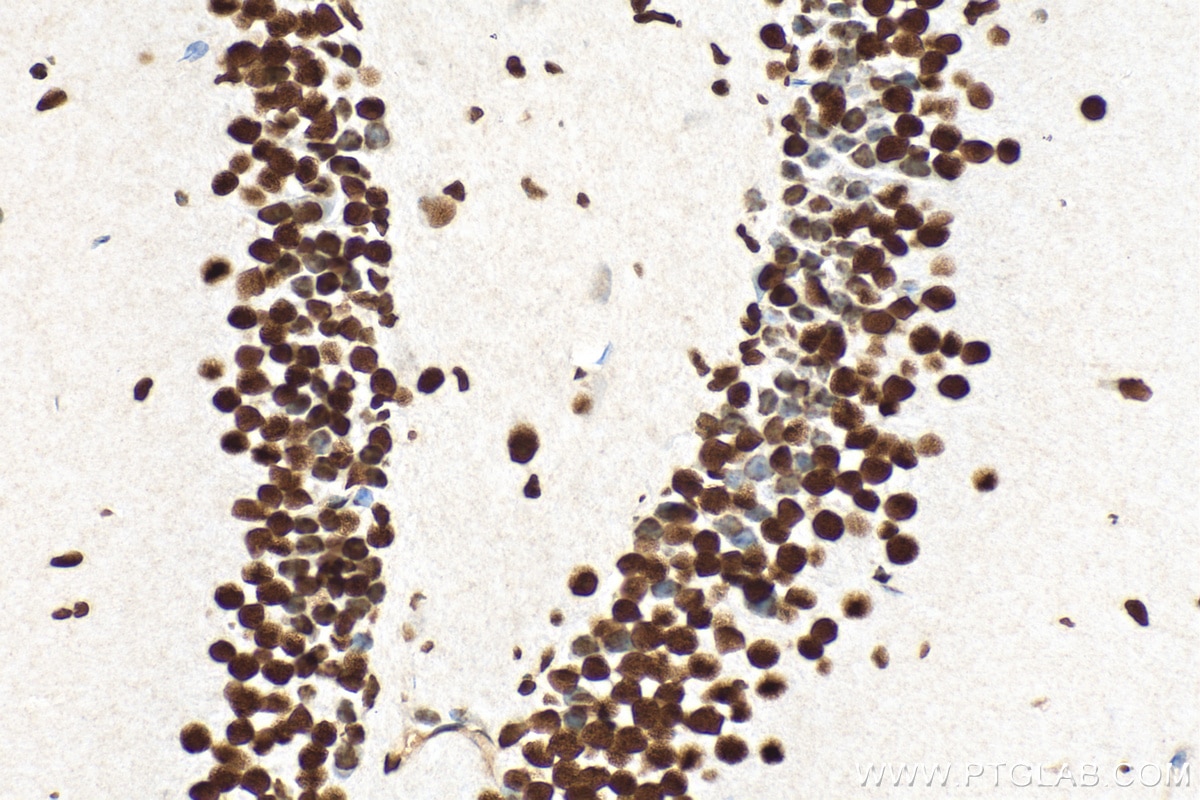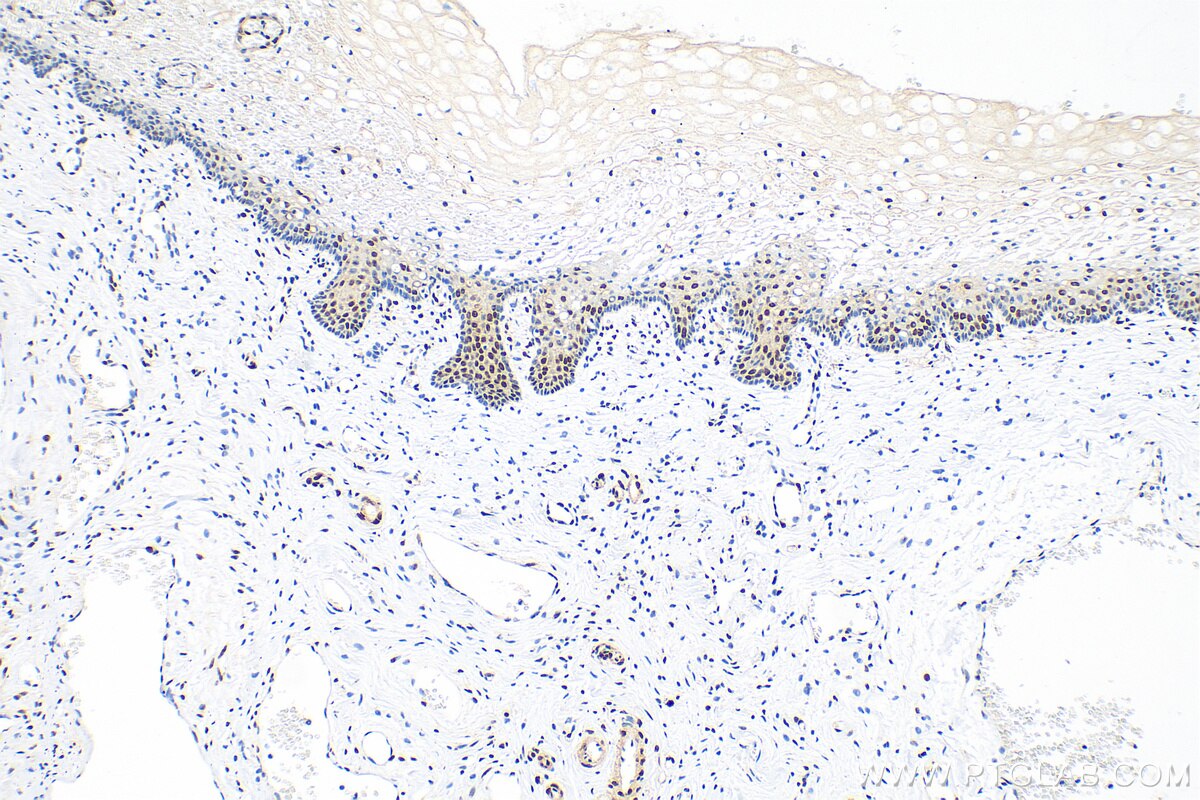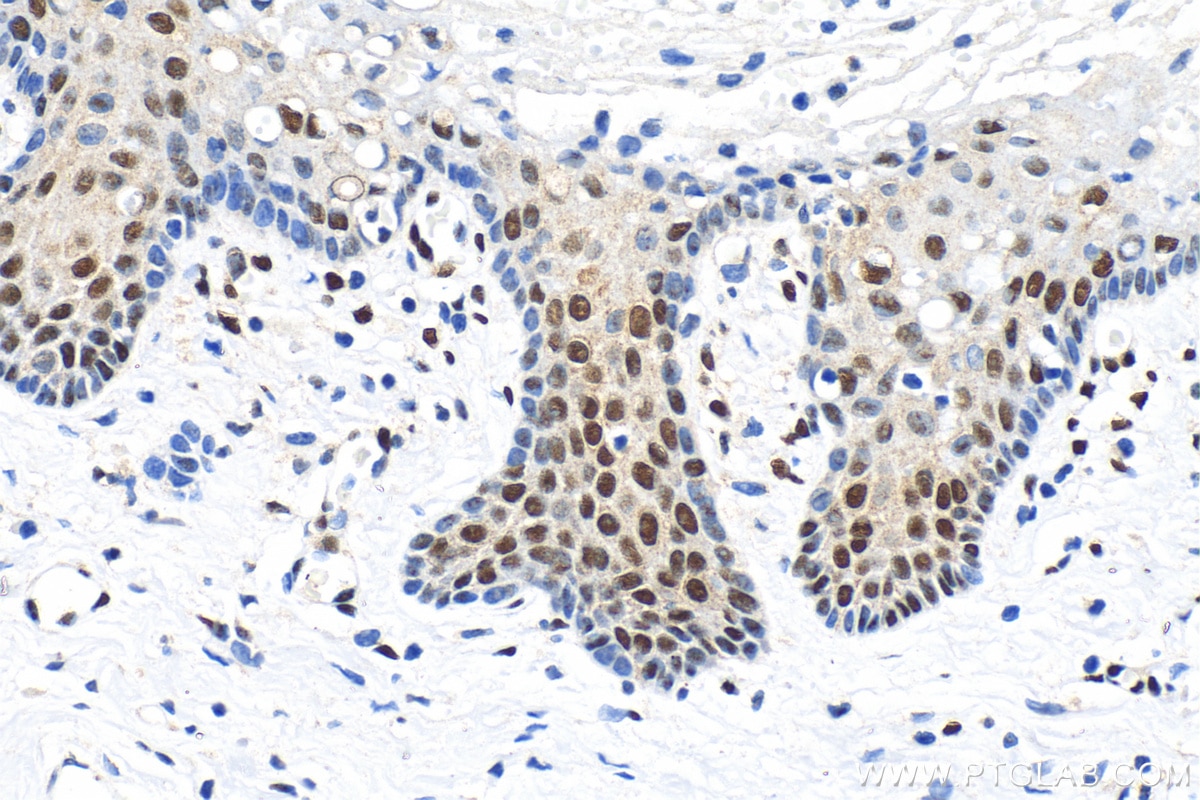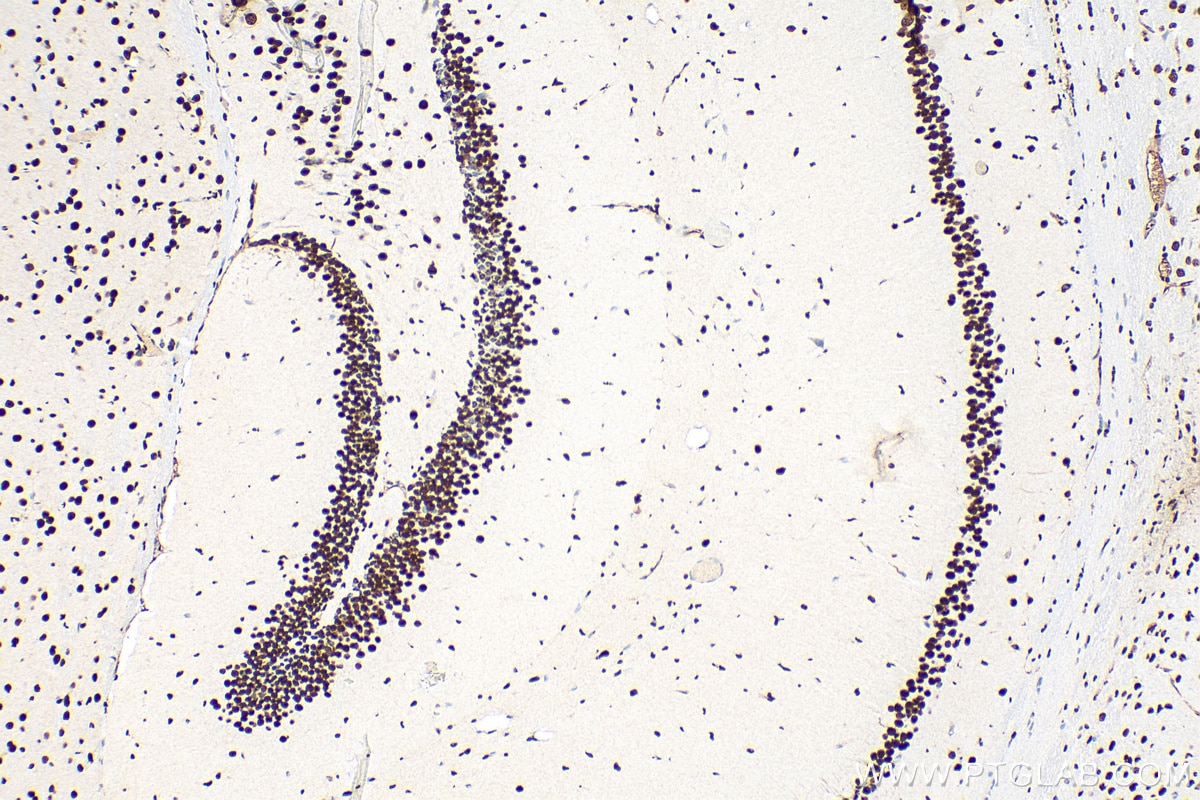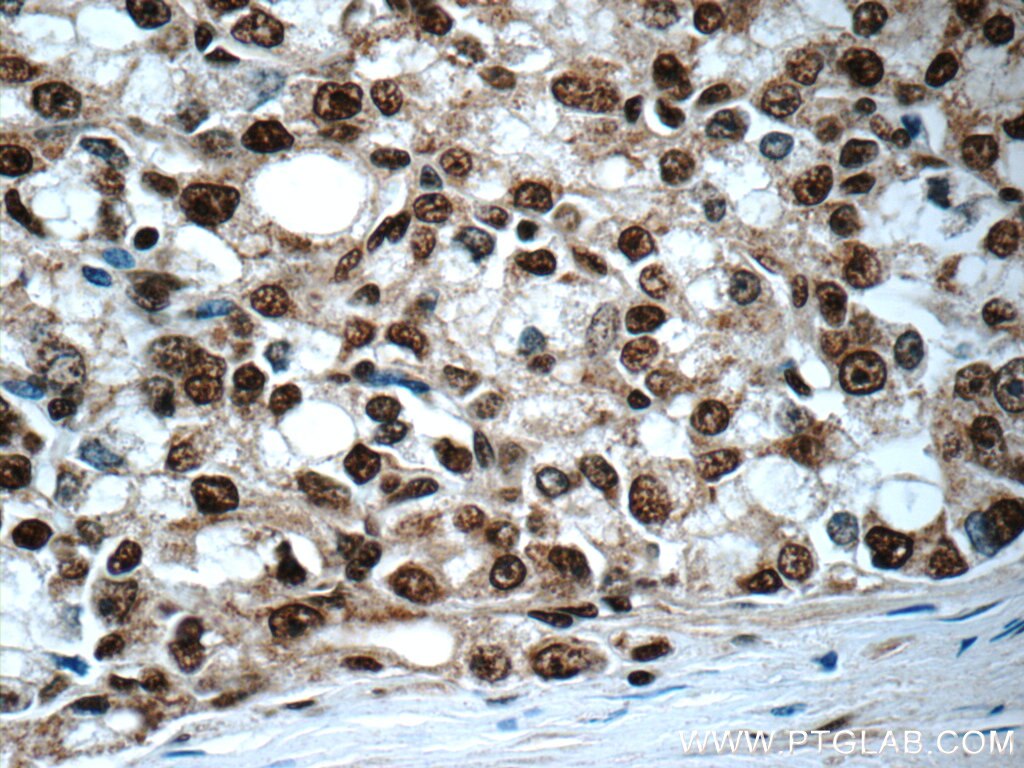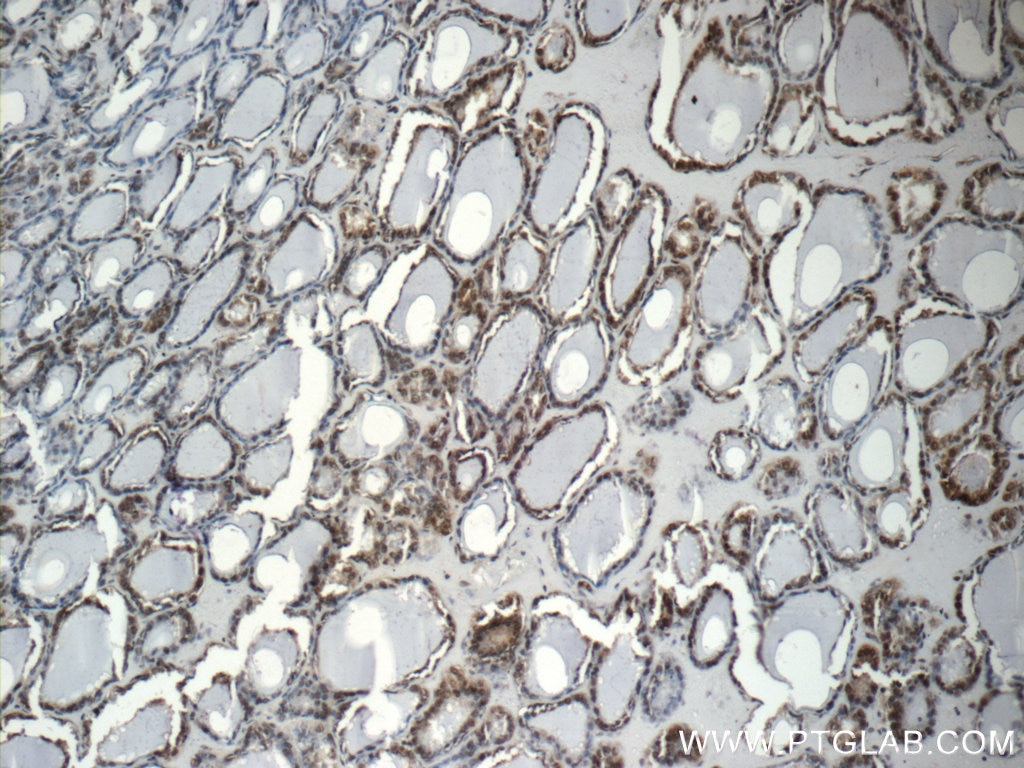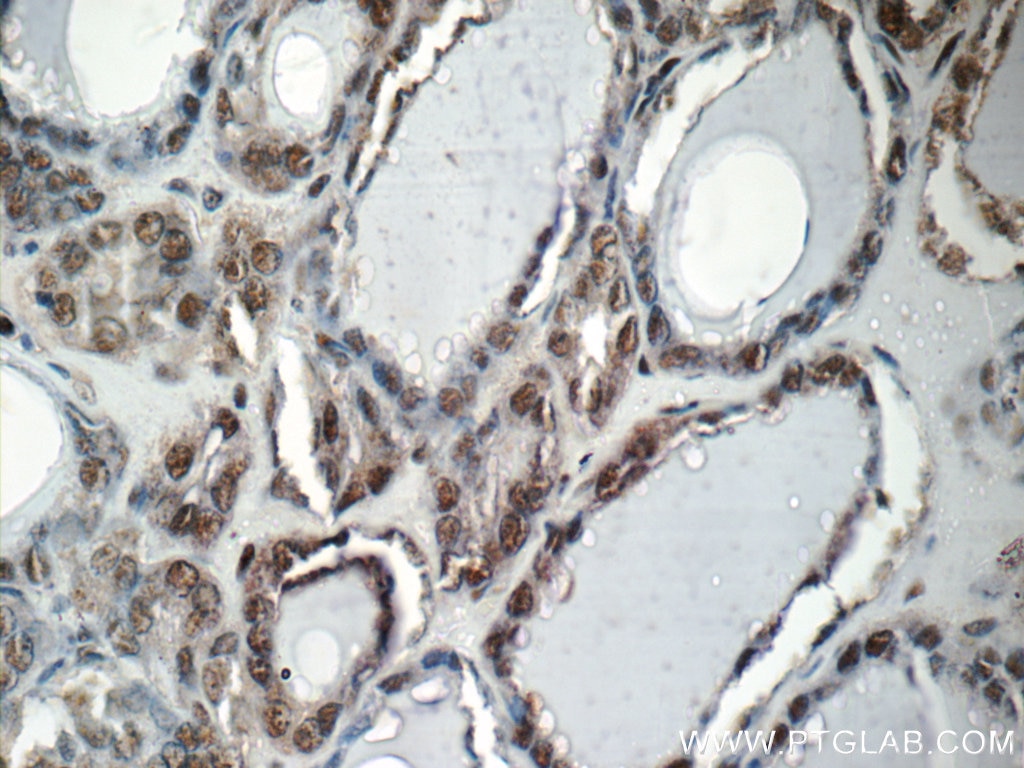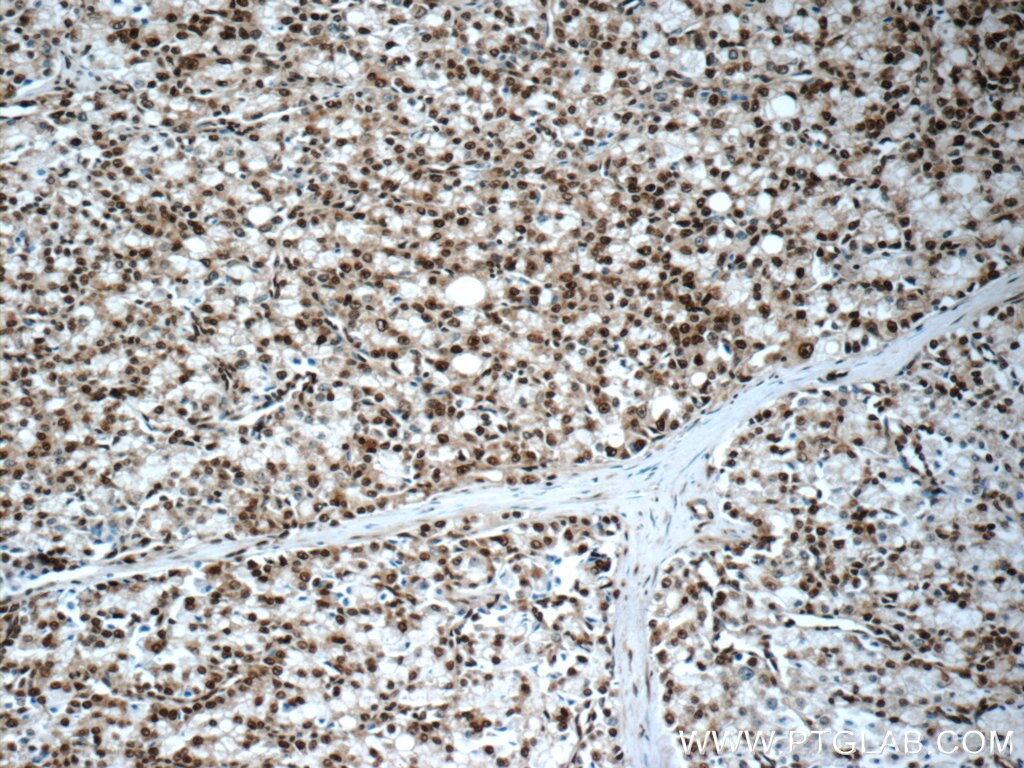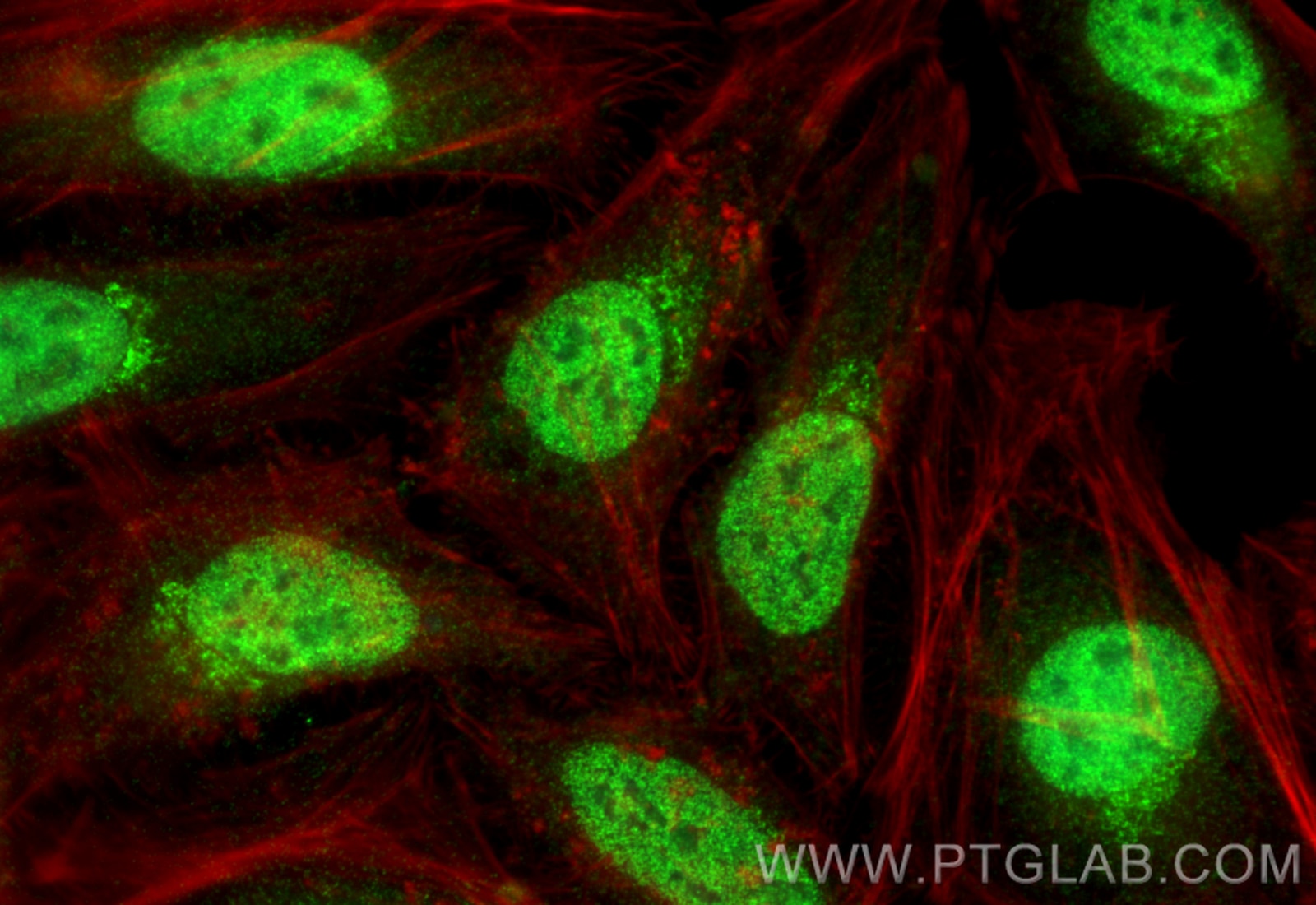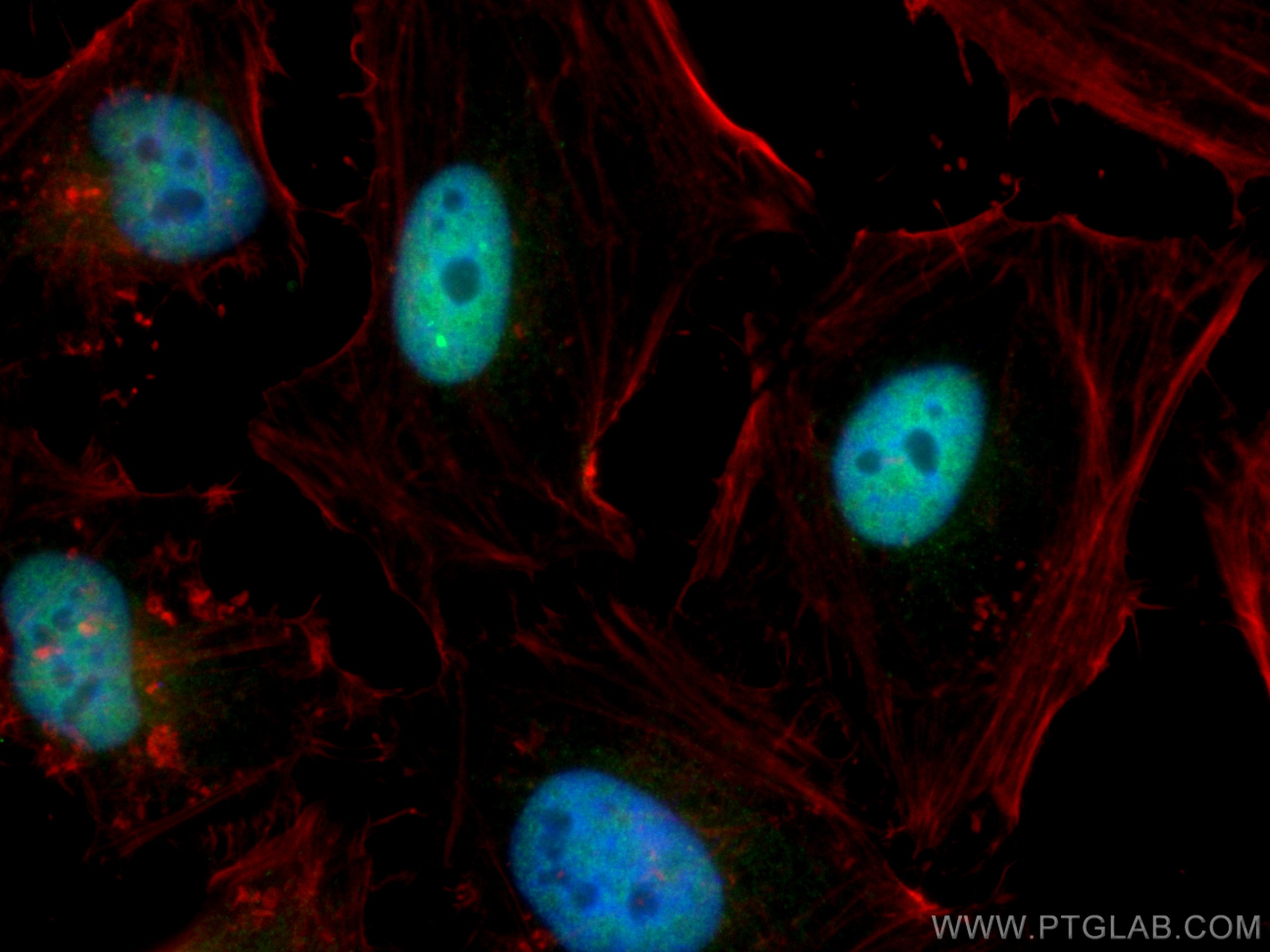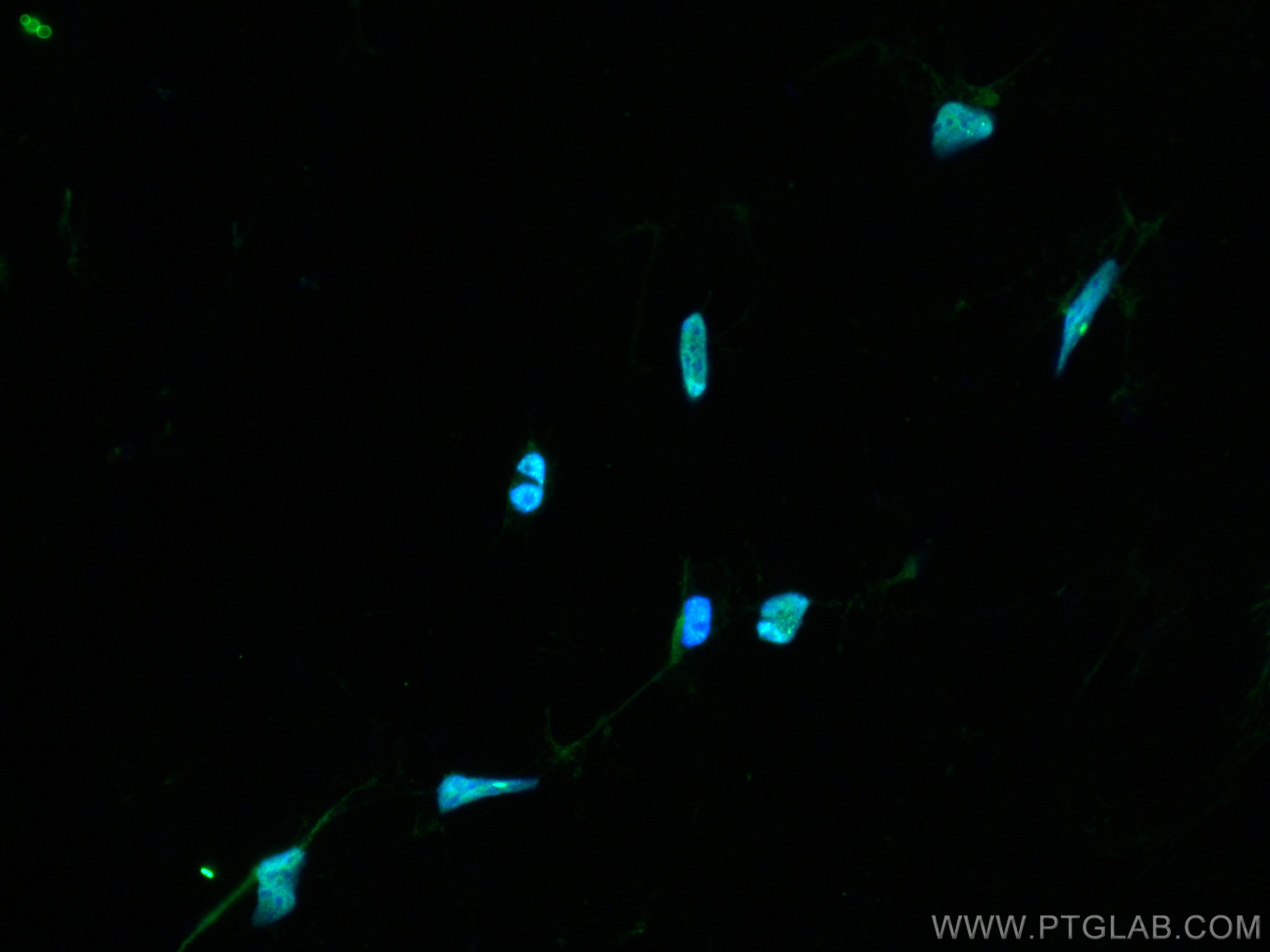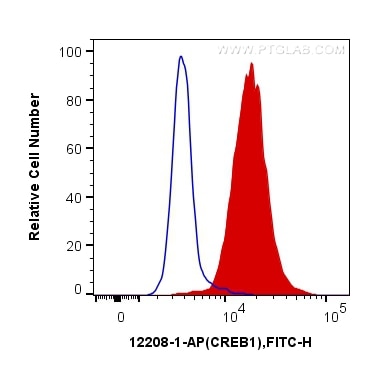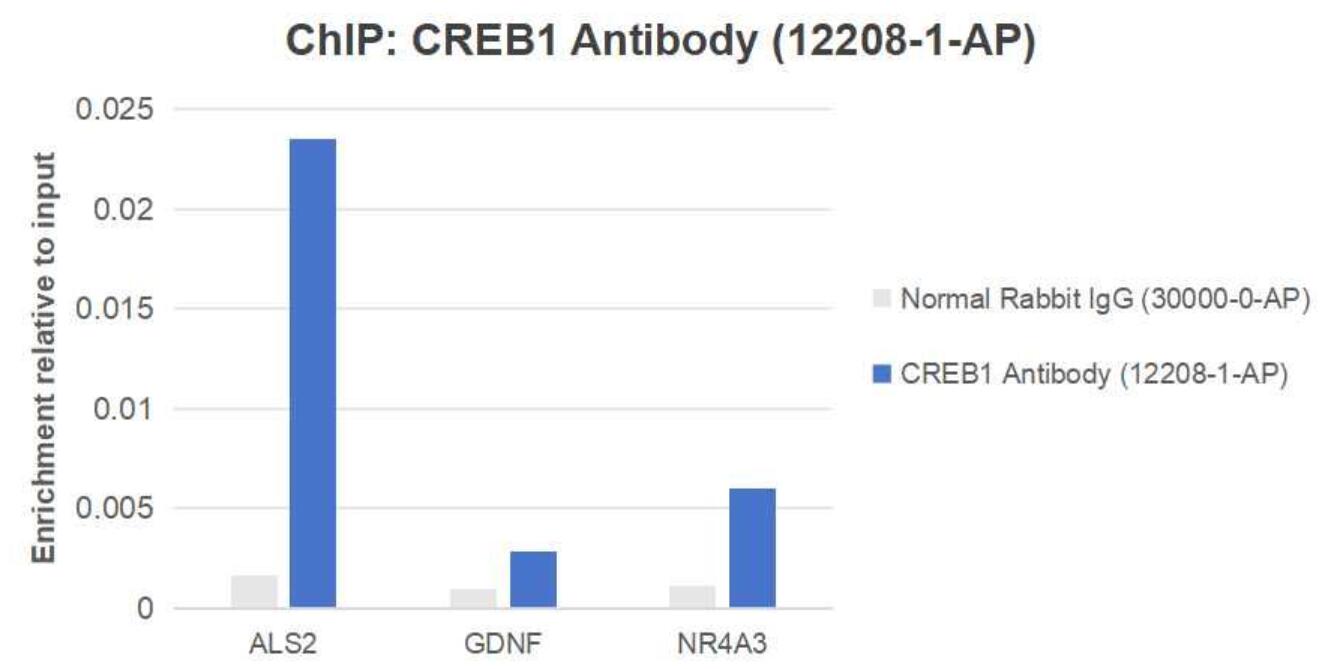- Phare
- Validé par KD/KO
Anticorps Polyclonal de lapin anti-CREB1
CREB1 Polyclonal Antibody for WB, IHC, IF/ICC, FC (Intra), IP, ChIP, ELISA
Hôte / Isotype
Lapin / IgG
Réactivité testée
Humain, rat, singe, souris et plus (2)
Applications
WB, IHC, IF/ICC, FC (Intra), IP, CoIP, ChIP, RIP, ELISA
Conjugaison
Non conjugué
N° de cat : 12208-1-AP
Synonymes
Galerie de données de validation
Applications testées
| Résultats positifs en WB | cellules HEK-293, cellules A431, cellules COS-7, cellules HeLa, cellules HepG2, cellules HL-60, cellules Jurkat, cellules K-562, cellules MCF-7, cellules NIH/3T3, cellules PC-12, cellules PC-3, multi-cellules/tissus, tissu cérébral de rat, tissu cérébral de souris, tissu pulmonaire de souris |
| Résultats positifs en IP | cellules HEK-293, |
| Résultats positifs en IHC | tissu cérébral de souris, tissu de cancer de la prostate humain, tissu de cancer du col de l'utérus humain, tissu thyroïdien humain il est suggéré de démasquer l'antigène avec un tampon de TE buffer pH 9.0; (*) À défaut, 'le démasquage de l'antigène peut être 'effectué avec un tampon citrate pH 6,0. |
| Résultats positifs en IF/ICC | cellules HeLa, cellules HEK-293 |
| Résultats positifs en FC (Intra) | cellules HEK-293, |
| Résultats positifs en ChIP | cellules HEK-293, |
Dilution recommandée
| Application | Dilution |
|---|---|
| Western Blot (WB) | WB : 1:2000-1:12000 |
| Immunoprécipitation (IP) | IP : 0.5-4.0 ug for 1.0-3.0 mg of total protein lysate |
| Immunohistochimie (IHC) | IHC : 1:500-1:2000 |
| Immunofluorescence (IF)/ICC | IF/ICC : 1:400-1:1600 |
| Flow Cytometry (FC) (INTRA) | FC (INTRA) : 0.25 ug per 10^6 cells in a 100 µl suspension |
| CHImmunoprécipitation (IP) | CHIP : 1:10-1:100 |
| It is recommended that this reagent should be titrated in each testing system to obtain optimal results. | |
| Sample-dependent, check data in validation data gallery | |
Informations sur le produit
12208-1-AP cible CREB1 dans les applications de WB, IHC, IF/ICC, FC (Intra), IP, CoIP, ChIP, RIP, ELISA et montre une réactivité avec des échantillons Humain, rat, singe, souris
| Réactivité | Humain, rat, singe, souris |
| Réactivité citée | rat, Chèvre, Humain, poulet, souris |
| Hôte / Isotype | Lapin / IgG |
| Clonalité | Polyclonal |
| Type | Anticorps |
| Immunogène | CREB1 Protéine recombinante Ag2852 |
| Nom complet | cAMP responsive element binding protein 1 |
| Masse moléculaire calculée | 341 aa, 35 kDa |
| Poids moléculaire observé | 43-46 kDa |
| Numéro d’acquisition GenBank | BC010636 |
| Symbole du gène | CREB1 |
| Identification du gène (NCBI) | 1385 |
| Conjugaison | Non conjugué |
| Forme | Liquide |
| Méthode de purification | Purification par affinité contre l'antigène |
| Tampon de stockage | PBS with 0.02% sodium azide and 50% glycerol |
| Conditions de stockage | Stocker à -20°C. Stable pendant un an après l'expédition. L'aliquotage n'est pas nécessaire pour le stockage à -20oC Les 20ul contiennent 0,1% de BSA. |
Informations générales
CREB1, also named as CREB, belongs to the bZIP family, containing one bZIP domain and one KID (kinase-inducible) domain. This protein binds the cAMP response element (CRE), a sequence present in many viral and cellular promoters. CREB stimulates transcription on binding to the CRE. This protein is stimulated by phosphorylation. Phosphorylation of both Ser-133 and Ser-142 in the SCN regulates the activity of CREB and participates in circadian rhythm generation. Phosphorylation of Ser-133 allows CREBBP binding. Transcription activation is enhanced by the TORC coactivators which act independently of Ser-133 phosphorylation. CREB1 is sumoylated by SUMO1. Sumoylation on Lys-304, but not on Lys-285, is required for nuclear localization of this protein. Sumoylation is enhanced under hypoxia, promoting nuclear localization and stabilization. Defects in CREB1 may be a cause of angiomatoid fibrous histiocytoma (AFH), a distinct variant of malignant fibrous histiocytoma that typically occurs in children and adolescents and is manifest by nodular subcutaneous growth. A chromosomal aberration involving CREB1 is found in a patient with angiomatoid fibrous histiocytoma. Translocation t(2;22)(q33;q12) with CREB1 generates a EWSR1/CREB1 fusion gene that is most common genetic abnormality in this tumor type. CREB1 exists some isoforms and range of calculated molecular weight of isoforms are 35-37 kDa and 25 kDa, but the modified CREB1 protein is about 43 kDa (PMID: 25883219 ).
Protocole
| Product Specific Protocols | |
|---|---|
| WB protocol for CREB1 antibody 12208-1-AP | Download protocol |
| IHC protocol for CREB1 antibody 12208-1-AP | Download protocol |
| IF protocol for CREB1 antibody 12208-1-AP | Download protocol |
| IP protocol for CREB1 antibody 12208-1-AP | Download protocol |
| Standard Protocols | |
|---|---|
| Click here to view our Standard Protocols |
Publications
| Species | Application | Title |
|---|---|---|
Cell Metab CircACC1 Regulates Assembly and Activation of AMPK Complex under Metabolic Stress.
| ||
Mol Cell LKB1 controls inflammatory potential through CRTC2-dependent histone acetylation | ||
Mol Cancer CircEZH2/miR-133b/IGF2BP2 aggravates colorectal cancer progression via enhancing the stability of m6A-modified CREB1 mRNA. | ||
Environ Int Exposure to dithiocarbamate fungicide maneb in vitro and in vivo: Neuronal apoptosis and underlying mechanisms | ||
Redox Biol Dysfunction of astrocytic glycophagy exacerbates reperfusion injury in ischemic stroke |
Avis
The reviews below have been submitted by verified Proteintech customers who received an incentive for providing their feedback.
FH Georgiana (Verified Customer) (01-10-2023) |
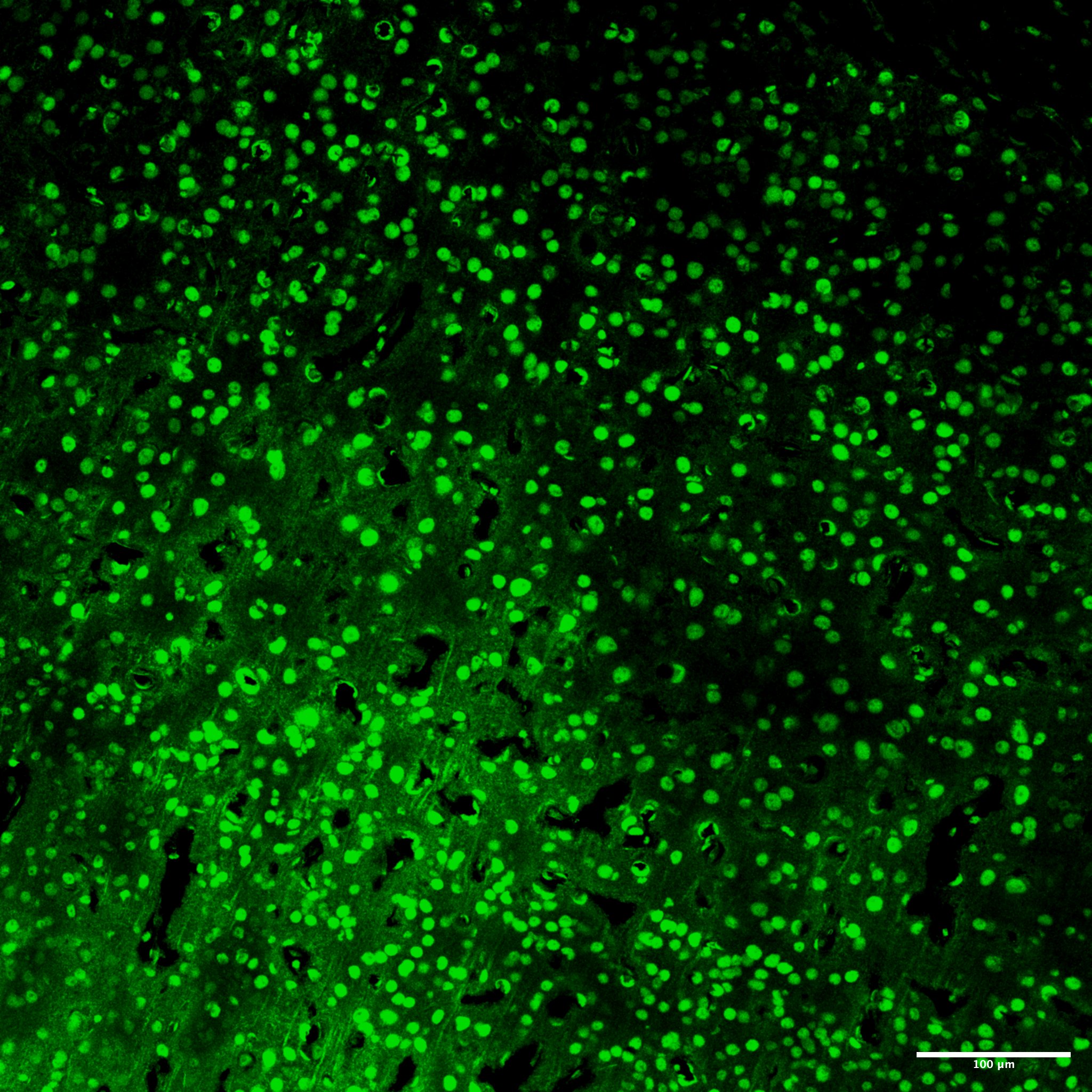 |
FH Shogo (Verified Customer) (02-22-2019) | Approximately 50 mg of whole brain were applied to ChIP assay.Fragmented DNA was immunoprecipitated with the CREB antibody (250 ng) at 4 oC for overnight.
|
